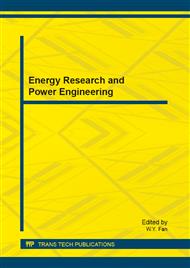[1]
M. Kondo, K. Kimura. Collision avoidance using afree space enumeration method based on grid expansion. Advanced Robotics, 3(3), 1989, pp.159-175.
DOI: 10.1163/156855389x00073
Google Scholar
[2]
Z.Q. Ma, R. Zeng. Mobile robot real-time navigation and obstacle avoidance based on the grid method. Robot, 18(6), 1996, pp.344-348.
Google Scholar
[3]
P. Trahanias. Visual Recognition of Workspace Landmarks for Topological Navigation. Autonomous Robotics, 7(2), 1999, pp.143-158.
Google Scholar
[4]
D. Avis, B.K. Bhattacharya. Algorithms for Computing d-dimensional Voronoi Diagrams and Their Duals. Advances in Computing Research. 1 (1983), pp.159-180.
Google Scholar
[5]
H. Choset, K. Nagatani, A. Rizzi. Sensor based planning: Using a honing strategy and local map method to implement the generalized Voronoi graph. In Proc. SPIE Conf. Systems and Manufacturing, (1997).
DOI: 10.1117/12.299555
Google Scholar
[6]
G. Dudek, M. Jenkin. Computational principles of mobile robotics. Cambridge Univ Press,2000, pp.132-145.
Google Scholar
[7]
Lozano-Perez T. Automatic planning of manipulator transfer mobement. IEEE Trans on Systems, Man and Cybernetics, 11(10), 1981, pp.681-698.
DOI: 10.1109/tsmc.1981.4308589
Google Scholar
[8]
Lozano-Perez T. Spatial planning: A configuration space approach. IEEE Trans on Computers, 32(2), 1983, pp.108-120.
DOI: 10.1109/tc.1983.1676196
Google Scholar
[9]
E. Fabrizi, A. Saffioti. Extracting Topology-Based Maps from Gridmaps. In Proc. Of the IEEE Int. Conf. on Robotics and Automation(ICRA), 29(2000), pp.72-78.
DOI: 10.1109/robot.2000.846479
Google Scholar
[10]
Habib M. K, Asama H. Efficient method to generate collision free path for autonomous mobile robot based on new free space structuring approach. Proc. IEEE/RSJ IROS, 1991, pp.563-567.
DOI: 10.1109/iros.1991.174534
Google Scholar
[11]
S. d. Sun, Y.B. Qu. The applied research of the genetic algorithms in robot path planning. Northwestern Polytechnical University, 16(1), 1998, pp.79-83.
Google Scholar
[12]
Chatila R. Path Planning and Environment Learning in a Mobile Robot System. Proc of the European Conf on AI, (1982).
Google Scholar
[13]
J. Kim, R. Pearce, N. Amato. Robust Geometric-Based Localization in Indoor Environments Using Sonar Range Sensors. In Proc. Of the IEEE Int. Conf. on Intelligent Robots and Systems(IROS), 2002, pp.421-426.
DOI: 10.1109/irds.2002.1041426
Google Scholar
[14]
N.Q. Liu, G.M. Zhou. A new method based on multi-ultrasonic information establishing a new environmental model precisely. 27(3), 2005, pp.261-266.
Google Scholar
[15]
Moravec H P. Sensor Fusion in Certain Grids for Mobile Robots. A I Magazine, 9(2), 1988, pp.61-74.
Google Scholar


